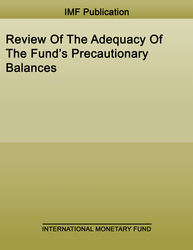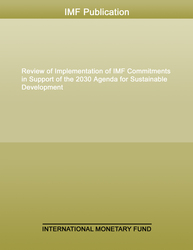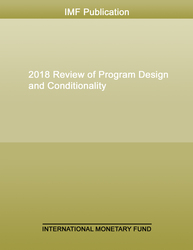
Review Of The Adequacy Of The Fund’s Precautionary Balances
Review Of The Adequacy Of The Fund’s Precautionary Balances
READ MORE...
Volume/Issue:
Volume 2022
Issue 062
Publication date: December 2022
ISBN: 9798400228773
$5.00
Add to Cart by clicking price of the language and format you'd like to purchase
Available Languages and Formats
| English |
Prices in red indicate formats that are not yet available but are forthcoming.
Topics covered in this book
This title contains information about the following subjects.
Click on a subject if you would like to see other titles with the same subjects.
Banks and Banking , Exports and Imports , Economics- Macroeconomics , Money and Monetary Policy , Political Economy , concentration risk , D , financial risks , risk management framework , Fund credit , transparency policy , fund financial risks , Income , Credit , Credit risk , Credit ratings , Emergency assistance , Global , Caribbean , Western Hemisphere
Also of interest
Summary
On December 12, 2022, the IMF’s Executive Board reviewed the adequacy of the Fund’s precautionary balances. The review took place on the standard two-year cycle, after an interim review in December 2021. Precautionary balances comprise the Fund’s general and special reserves. They are a key element of the IMF’s multi-layered framework for managing financial risks. Precautionary balances provide a buffer to protect the Fund against potential losses, resulting from credit, income, and other financial risks. In conducting the review, the Executive Board applied the rules-based framework agreed in 2010. Precautionary balances have risen further since the 2021 interim review and coverage metrics have strengthened. At the same, credit and other financial risks have also increased. The pace of reserve accumulation is expected to remain adequate. Against this background, Executive Directors endorsed staff’s proposal to retain the current medium-term target of SDR 25 billion and the minimum floor of SDR 15 billion. The Board also discussed the role of surcharges, which are primarily a component of the Fund’s risk management framework but also contribute to reserves accumulation.
Copyright © 2010 - 2025
Powered by:
AIDC



